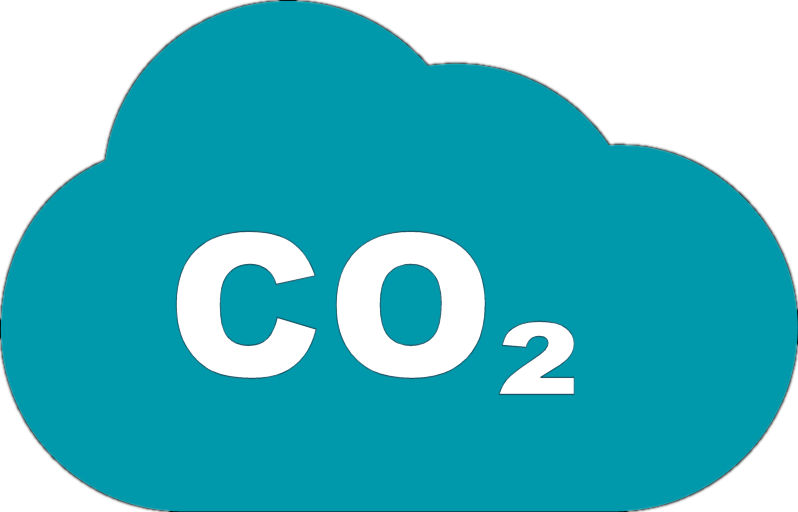Formulae used in calculating the environmental impact due to loss of trees in paper production and the greenhouse gas mainly carbon dioxide (CO2) released during the process.
Some paper facts and assumptions:
- Here we consider the paper used for printing are 100% virgin copier paper of A4 size and not recycled.per Facts:
- 1 A4 size sheet weighs 0.009 pounds (0,004 g) (see: https://www.papersizes.org/paper-weights.htm)
- 1 carton = 10 reams = 5000 sheets
- 1 tree makes 16.67 reams of copy paper or 8,333 sheets
- 1 ream (500 sheets) uses 6% of a tree, i.e. 0.6 trees (see: http://conservatree.org/learn/EnviroIssues/TreeStats.shtml)
- Carbon absorption by trees (Carbon sequestration)
- The amount of carbon absorbed vary for trees of different species and ages. Here, a 25 year old pine tree is taken as a standard for calculation.
- An average pine tree of 25 year old absorbs 14.667 [1] pounds (6,350 kg) of CO2 per year.
Calculating the impact of cutting down trees
 |
This value represents the number of tree(s) that has gone into the making of paper, Calculation: Total number of sheets of paper / 5000 sheets (per carton) * 0.6 trees For example: A company uses printing paper on an average of 245,902 (non-recycled) A4 sheets per year. Calculating the loss of trees due to this print paper usage would be: 245,902 sheet of paper per year / 5000 sheets = 49.18 cartons of paper 49.18 cartons * 0.6 trees = 29.50824 trees are cut down per year |
Calculating the total carbon dioxide emitted
The carbon dioxide emission is calculated in two parts:
- Carbon sequestration
This denotes the quantity of carbon that would have been absorbed had the tree been alive. According to the assumption: An average pine tree of 25 year old absorbs 14.667 pounds (6,350 kg) of CO2 per year.
Calculating the CO2 sequestration for each sheet of paper : (Number of trees * 14.667 pounds (6,350 kg) of CO2) / Number of sheets
For the above example, if 29.50824 trees are cut down per year, then 29.50824 trees cut down * 14.667 pound of CO2 = 432.80 pounds (195,95 kg) of CO2 is no longer absorbed due to loss of trees.
Thus, each sheet of paper is worth 432.80/245,902 = 0.00176 pounds (0,00080 kg) of CO2
- Carbon dioxide produced during paper production
According to EPA%(color-red)*% 1 pound of paper produces 4.36%(color-red)2% pounds of CO2 during production.
Calculating the CO2 produced by each sheet of paper: (Total weight of paper in pounds * 4.36 pounds of CO2 ) / Number of sheets
For the above example, 245,902 sheets of paper * 0.009 pounds per paper = 2,213.12 pounds (1003,7 kg) of paper
2,213.12 pounds of paper * 4.36 pounds of CO2 = 9469.19 pounds (4295,06 kg) of CO2 is produced during paper production
Thus, each sheet of paper produces 9469.19 pounds / 245902 sheets of paper = 0.03924 pounds (0,01783 KG) of CO2 during production
 |
The CO2 emission is calculated as a sum total of carbon dioxide not absorbed due to tree loss + carbon dioxide released during paper production Calculation: (Number of trees * 14.667 pounds of CO2) / Number of sheets + (Total weight of paper in pounds * 4.36 pounds of CO2 ) / Number of sheets For the above example: (0.00176 + 0.03924) * 245902 = 10,081.99 pounds (4572,66 kg) of CO2 is released per year. |
You may also read :https://www.celiveo.com/smart-printing-blog/green-it-environmental-facts-about-printing
[1] [2] The values are derived from Study Report: Save Paper submitted by Daniel in MIT, and U.S EPA, 2006. Solid Waste Management and Greenhouse Gases: A Life-Cycle Assessment of Emissions and Sinks, EPA530-R-06-004
* U.S. Environmental Protection Agency, publishes guidelines for minimum recycled product content, for use by federal agencies for purchasing standards. EPA also advocates source reduction practices, as well as other aspects of environmentally sound products, such as reduced toxins, energy savings, and biomass projects. In addition to providing guidance on environmental products, EPA regulates many aspects of paper industry production, including emissions (air, water, land) and solid waste management.



Post your comment on this topic.